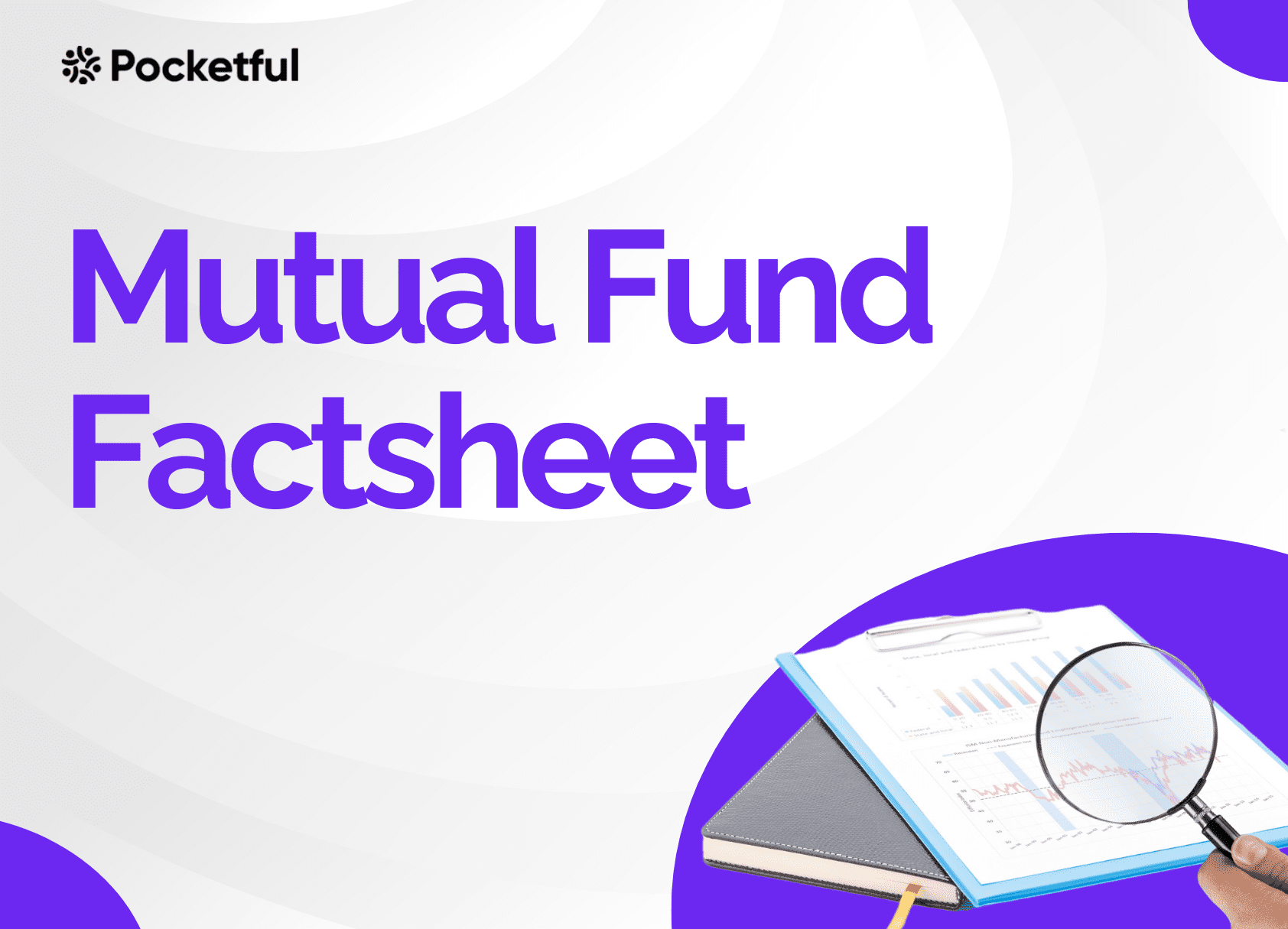| Type | Description | Contributor | Date |
|---|---|---|---|
| Post created | Pocketful Team | Jun-12-24 | |
| Internal linking | Nisha | Feb-15-25 |

- Blog
- what mutual fund fact sheet
Mutual Fund Factsheet: Definition And Importance

Are you considering investing in mutual funds and browsing different websites to get information about a plan? Worry not—we’ve got you covered. A document known as a Mutual Fund Factsheet compiles all the information about a scheme in one convenient location.
Read our blog to see how it can assist you in making informed decisions.
What is Mutual Fund Factsheet
A mutual fund factsheet is a document that asset management companies release every month for all of their mutual funds. It includes all the vital details about a mutual fund scheme, like its goal, fund manager, performance, and portfolio. It is available for investors to download directly from their website.
The Securities Exchange Board of India (SEBI) has mandated that factsheets be issued every month as they convey fund specific information.
Key Elements of a Factsheet

The key elements of a factsheet can be divided into various categories –
- Fund Details – The section dedicated to fund details includes the fund’s name and type—equity, debt, hybrid, etc.—as well as its inception date and main goals, such as growth or dividends.
- Performance – This section provides a thorough study of the fund’s performance from its creation to the present day, spanning a period of one day to ten years. Additionally, it compares the results with the applicable benchmark index. You can also find the graphical representation of the performance.
- Portfolio Composition – This statement outlines the fund manager’s investment breakdown by asset class, which includes stock, debt, and other investments made with your funds. The portfolio’s top holdings as well as the sector allocation are available here.
- Fees and Expenses – It includes a list of the different fees and expenses that asset management firms charge. This is referred to as the “Expense Ratio,” and it is calculated as a percentage of the asset value of the fund.
- Risk Factor – A fund’s risk and volatility are measured using a variety of metrics such as standard deviation, beta, and alpha. These calculations can be used to understand the risk factor.
- Fund Manager Details – The factsheet also includes information about the fund manager overseeing your deposits, including their name, qualifications, and experience. The factsheet also discusses the fund management technique and style.
- Investment Amount – The fund fact sheet provides information on the fund’s investments, including the minimum amount an investor can put in a systematic investment plan (SIP), lump sum, dividend and capital gain distribution data, and the total assets managed by the fund.
- Disclosures – The fact sheet is required to include several disclosures, including the ones that state that past performance does not guarantee future results.
- Contact Details – The sheet also includes the head office address and contact information for asset management organizations.
- Investment Style – The sheet also includes a grid that illustrates the fund’s investment style according to its category. For instance, the large-cap fund’s investment style displays a mix of large-cap growth-oriented equities.
- Riskometer – Asset management firms are required by SEBI to display the fund’s riskometer on their factsheets. An investor can determine whether a fund is appropriate for their risk tolerance by using the riskometer.
Read Also: Types of Mutual Funds in India
Importance of Factsheet

The factsheet carries several important pieces of data that an investor must look at before making their investment decision. The investor can use the information to determine the fund’s suitability based on their risk tolerance and investment objectives. Some such uses are mentioned below:
- An investor can examine the fund’s performance and compare it to their benchmark return by reading the factsheet.
- Fund factsheets can be used to comprehend different risk indicators, such as beta, standard deviation, and sharpe ratio.
- An investor can determine the risk of the fund by using additional qualitative metrics, such as the fund’s riskometer.
- Exit load and expense ratio of the fund can be compared with competitors using data provided in factsheets.
- The fund factsheet also includes fund management approaches and an objective so that investors can determine the fund’s purpose and match it to their investment goals.
Should an Investor read the Fact Sheet?

No matter how much knowledge an investor has about mutual funds, investing before examining vital information can prove fatal. The factsheet is written in a style that is easy for a layperson to comprehend. A thorough comprehension of the investment product you are about to invest your hard-earned money in is vital.
Conclusion
In summary, a factsheet is a crucial tool that investors may use to thoroughly understand a fund and make an informed selection. The factsheet lets you analyze the performance of the fund manager by comparing the fund’s returns with those of their peers using the information given. However, before making any investing decisions, you should analyse all the points thoroughly or consult your investment advisor.
Frequently Asked Questions (FAQs)
What is the purpose of a factsheet issued by Asset Management Companies?
The purpose of the factsheets is to give investors information about the funds that asset management businesses offer, including portfolio composition and fund performance.
What is the frequency of factsheets issued by the AMCs?
The factsheets are issued every month.
How can I use the information about the fund manager given in the factsheet before making any investment decision?
Before choosing a fund to invest in, we can research the fund manager’s qualifications, experience, and track record.
What does a mutual fund factsheet tell you about?
The mutual fund fact sheet provides an overview of the fund, including information on holdings, historical performance, and investing objectives.
Where can I find the factsheet of a mutual fund scheme?
Visit the asset management company’s website and navigate to the download section. From there, you can download the factsheet for any mutual fund scheme.
Disclaimer
The securities, funds, and strategies discussed in this blog are provided for informational purposes only. They do not represent endorsements or recommendations. Investors should conduct their own research and seek professional advice before making any investment decisions.